General
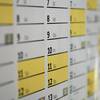 What is the best time to visit Germany?
What is the best time to visit Germany?
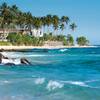 What is the climate like in Germany?
What is the climate like in Germany?
 What NOT to do in Germany?
What NOT to do in Germany?
 How do I access Internet in Germany?
How do I access Internet in Germany?
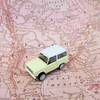 Where should I go in Germany for 2 weeks?
Where should I go in Germany for 2 weeks?
 What type of adapter do I need for the outlets?
What type of adapter do I need for the outlets?
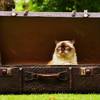 What should I pack for my trip?
What should I pack for my trip?
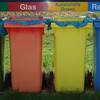 What should I know about recycling in Germany?
What should I know about recycling in Germany?
Transport
People
Accomodation
Food & Drink
Sightseeing
Legal
Money
Safety & Health
Family travel
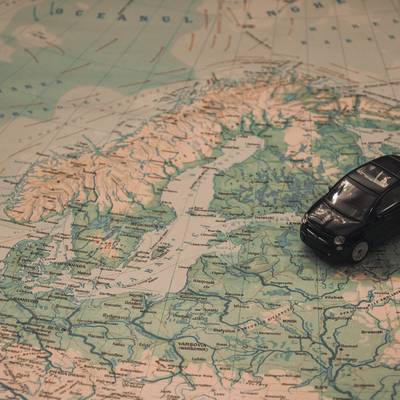
Where should I go in Germany for a week?
Germany’s range of cosmopolitan interspersed with it’s picturesque landscapes and important 20th century history have made the country a favorite among various sorts of travelers: from the backpackers and hikers to the more classy tourists. But if there’s one thing to note about this stunning European country, it’s that just like most of it’s other Western-European counterparts, it’s nearly impossible to have visited the vast expanses of the land in as short as a few days. Germany packs a punch no matter what part you visit, but it’s a lot more rewarding to travel to the north and south, to the far reaches of the east and west, before you make up your mind about where you’d like to come back! Here's an itinerary to make the most out of your week in Germany.
Day 1: Munich. You’ll start your trip with grandeur in Bavaria’s gorgeous capital, Munich! Munich is one of Bavaria’s most stunning cities and you will not leave this place disappointed.
After your arrival in Munich head to the Old Town to start your immersion in the majestic architecture that this country has to offer. If you’ve landed at the Munich Airport, the Munich Marienplatz Station is 30 mins away. If you’ve arrived at the station, you can easily walk over to the city center.
Sign up (in advance!) for a walking tour of Old Town and explore the medieval architecture and the neo-Gothic new town hall with its bell tower. Have lunch in one of the many traditional beer gardens especially the lakeside one at Englischer Garten, which is an 18th– century park and the largest one in Germany, is a total delight. In summer the place is chirping with visitors and you won’t have a dull moment. After eating (and drinking!) to your heart’s content you can relax or take a stroll in the English garden.
Next, head to St. Peter’s Church which is the oldest church in the area and comprises mixed architectures for various elements or Asamkirche (Asam Church) which is a Baroque-styled church.
You can then head to one (or more) of the many museums in town to learn more about history, sculpture, and art. If you’re interested in science and technology then the Deutsches Museum is for you. Glyptothek is dedicated solely to ancient sculptures. There’s even an Egyptian Art Museum that is set below the ground. There’s something for everyone!
Tip: Many museums are closed on Mondays so be sure to check out the timings beforehand. Or go on a Sunday as the tickets in the state-run museums are ridiculously cheap.
In the evening, you can head over to the 200-year-old Victuals Market (Viktualienmarkt) which, as the name suggests, has over 100 food stalls as well as a beer garden. If you are a cheese lover, look no further!
Munich even has a beer hall, Hofbräuhaus, which is a huge 3-floor, beer hall dating back to the 16th century. The food here is amazing as well, but prepare to wait as this place is always packed.
Day 2: Neuschwanstein Castle. Neuschwanstein Castle is about 2 hours away from Munich so you can take a day trip to Füssen to explore this 19th century hilltop fairy tale castle of King Ludwig II of Bavaria. Click here for information about getting around in Germany.
From this castle, about 3 to 4 hours away is another castle that you can go explore. The Heidelberg Castle (Schloss Heidelberg) actually comprises the ruins of a castle dating back to the 16th century.
It is perched atop a hill and can be reached by taking the mountain railway (Bergbahn). It also houses the world’s largest wine barrel. Spend your evening at one of the lovely cafés in the city. Just like the museums, there’s one for every kind of café lover – a cozy retro one, an Instagrammable one, a terrace one or a modern one.
Head back to Munich and end the day by going on one of Munich’s pub crawls to experience the nightlife.
Day 3: Romantic Road, Rothenburg ob der Tauber. The Romantic Road (Romantische Straße) is a picturesque route through forests and nearby towns of Augsburg, Wurzburg, and Rothenburg, among others. It has views of the mountains and ultimately ends at the Neuschwanstein Castle and the Alps. So, if you didn’t get a chance to explore the castle before you can do it now.
You can take this Romantic Road route for about 3 hours from Munich to reach the quaint town of Rothenburg with its cobbled streets and timbered colorful houses. Rothenburg ob der Tauber translates to ‘red fortress above the Tauber River’ because this medieval town was once known for its red-roofed houses.
If you’re in a Christmassy mood or a lover of all things Christmas, you can head to the Christmas Museum which is open all year round. On the other side of the spectrum is the Criminal Museum which lets you witness the torture devices and techniques that were used in medieval times. You can head to the Rödertor Tower to get a wonderful aerial view of the town and then visit the imperial Rothenburg Castle. Here you can relax and spend a peaceful evening at the Castle Garden.
By the way, Rothenburg has been an inspiration for a number of books like Harry Potter and the Deathly Hallows and Willy Wonka and the Chocolate Factory!
For a unique experience, you can take the Night Watchman tour through the dark alleyways and dimly lit paths in the company of the Rothenburg Night Watchman.
Day 4: The Black Forest and Lake Constance. Black Forest is Germany’s iconic forested and mountainous region popularly known as the birthplace of the Grimm Brothers’ tale of Hansel & Gretel. It is a 3-hour drive from Rothenburg. It is the perfect family destination filled with adventure and relaxation options, Gothic-style hamlets and vineyards.
Adventure seekers can check out Steinwasen Theme Park or better yet Europa Park which is Europe’s 2nd largest theme park with various themed rides and roller coasters. Kids and adults alike will love it here! You can also check out Germany’s highest waterfall, Triberg Waterfall. The pathway leading to the top has several viewing platforms from where you can enjoy the view.
You can head to the Upper Middle Rhine Valley or popularly called Rhine Valley to explore the gorge which is a UNESCO World Heritage site. It is home to some of the best vineyards in Germany.
Tip: Fall is the best time to explore this area and enjoy wine tasting sessions, hiking trips and scrumptious food because the grape harvest festival is celebrated then.
Alternatively, you can head to another UNESCO World Heritage site, Lake Constance, also called Bodensee, which is 2 hours away. This lake borders four countries and has a gorgeous view of the Alps! Another UNESCO listed site is the small island of Reichenau, ironically the largest on Lake Constance. It also has a monastery of the same name and chapels dating back to the 9th century. Enjoy the stunning view of the lake from the island.
There are a number of activities you can do at the lake. Take a leisurely boat or ferry ride, enjoy a thermal bath or ride on the Zeppelin to see the lake from above. Catch the sunset by the lakeside and then dine at one of the restaurants nearby. Don’t forget to try the Lake Constance wine.
Day 5: Dresden. The next stop is the city of Dresden, on the banks of the Elbe river, which is 6-7 hours away from the Black Forest.
You can start by visiting the Baroque-style Dresden Frauenkirche church or Lady Church. The original, Romanesque-style 11th-century church was torn down and replaced by a larger Baroque-styled one in the 18th century but unfortunately, it was destroyed in the bombing of Dresden during World War II. The remains were left for half a decade as a war memorial. The church was later rebuilt after the reunification of Germany and completed by 2005. It is now a symbol of recognition of Dresden city’s skyline because of its unconventional high bell-shaped dome.
You can take a city tour to learn more about Dresden’s tumultuous past.
Check out the Green Vault (Grünes Gewölbe) where you will find the royal treasury. It is one of Europe’s most guarded chambers.
Dresden also has a charming side with its numerous European style cafes and bistros and a vibrant recreational area along the banks of the Elbe river.
Day 6: Hamburg. Catch a train or drive from Dresden to Hamburg which will take you about 5 hours and explore this port city for the day. The picturesque central boulevard of Hamburg that connects the Old Town to the New Town is worth exploring.
Are you a chocolate lover? Then Chocoversum is the place for you! Stepping inside will give you Willy Wonka’s chocolate factory feels. Not only can you take a tour of the place and learn how chocolates are made, you even get to taste a variety of chocolates. Plus you can even create your own custom chocolate bar.
Then you can head to Miniatur Wunderland which is the star attraction of Hamburg. It is a model railway and miniature airport museum, ironically the largest in the world. It is a wonder to see the sync in which the setup works.
Apart from the river, Hamburg also has a lake in the heart of the city called Lake Alster where you’ll find swans gracefully gliding over its waters.
You can end the day by enjoying the nightlife on Reeperbahn which is the entertainment (and red-light) district of Hamburg. Go out and enjoy the lively streets, where the Beatles have been rumored to have played, hit the clubs or sign up for a nightclub crawl.
Day 7: Berlin. There are hourly trains heading from Hamburg to Berlin and takes about 90 mins to an hour to reach your last stop on the itinerary. To start your day on a high note, head to the Reichstag dome and experience an aerial view of the city (it's free but you have to book your appointment in advance). This landmark is the glass dome built above the Reichstag. The Reichstag is the most significant and iconic historical building of the German empire, also known as the Imperial Diet or the Parliament. It is located in the government district of Berlin.
Then take a walking tour of the Brandenburg Gate and Holocaust Memorial. The Brandenburg Gate was a popular political gathering spot during the Cold War. It is the only surviving historic city gate and is a symbol of reunified Germany after the fall of the Berlin Wall. The Holocaust Memorial is a painful reminder of the departed, consisting of thousands of concrete slabs on grey pillars to remember the lost lives.
To lift your spirits up a little after this, you can head to the East Side Gallery which is an open-air gallery on the largest remaining stretch of the Berlin Wall to explore the murals and artworks. It has the status of being a heritage-protected landmark.
After this artistic marvel, you can head to the Museum Island that houses five world-class museums. It is a World Heritage site that provides insights into different spheres. The Pergamom is home to ancient architecture, The Altes Museum hosts Greek and Roman art, the Bode Museum has works of the Byzantine empire, the Alte Nationalgalerie shows glimpses of the 19th century and The Neues Museum has archaeological artifacts.
From there, you can check out the Berlin TV Tower (Berliner Fernsehturm) for some more aerial views of the city. For your last sundowner in Germany, you can chill at the cocktail bar and enjoy the skyline.
For your last night in Germany, you can head to Berlin’s largest garden and famous landmark, Tiergarten, for a leisurely late evening stroll.
Or you head to the hip neighborhood of Kreuzberg to chill at a café and enjoy craft beer at one of the many fast-food joints and restaurants around the area. This neighborhood also has clubs that are open till the wee hours of the morning.

How do I use ATMs in Germany?

Am I expected to tip in Germany?

Can I drink tap water in Germany?

What are the restrictions regarding alcohol consumption?
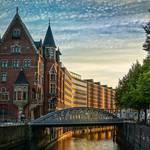
Where in Hamburg should I stay?
